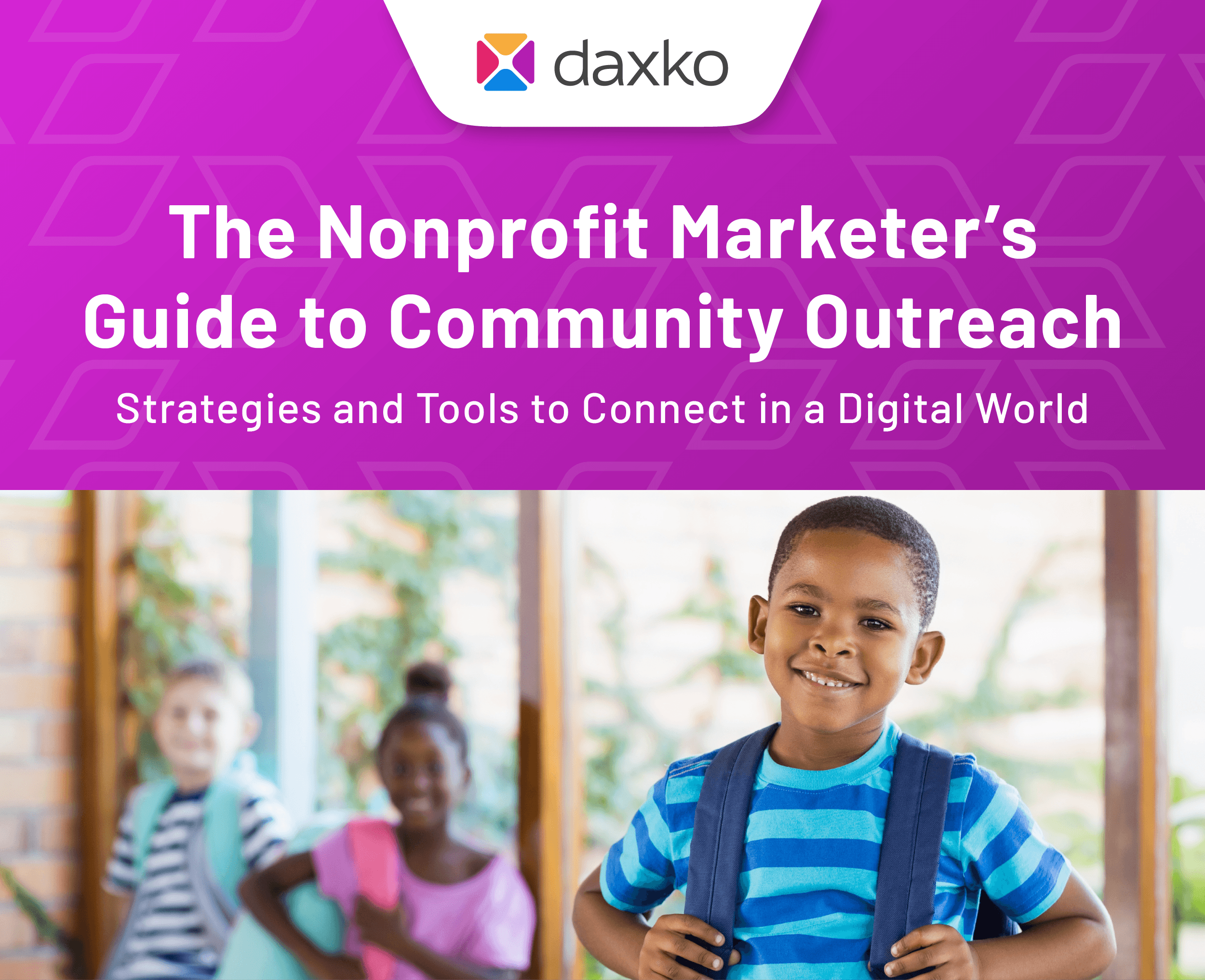

Artificial intelligence (AI) is no longer a distant, futuristic concept. It’s here, it’s now, and it’s transforming various sectors—including nonprofits. You might be wondering what AI is all about and how it can help your organization thrive.
Let’s walk through the basics of AI, its potential benefits, practical applications, and how to navigate its ethical and privacy considerations. By the end, you’ll have a solid understanding of how AI can elevate your nonprofit and enhance your mission.
What is AI?
Artificial Intelligence, or AI, refers to the simulation of human intelligence in machines. These machines are designed to think, learn, and make decisions much like a human would. Key AI concepts include – Machine Learning (ML), Algorithms, and Automation.
Machine Learning (ML)
Think of Machine Learning as a dedicated student constantly learning and evolving. This subset of AI revolves around algorithms—like virtual recipes—that improve with experience. Imagine an AI system analyzing donation patterns. Over time, it gets better at predicting which donors are likely to contribute again, just like a student who gets better at math with each problem they solve. Machine Learning allows AI to become smarter and more accurate, adapting to new data and refining its predictions.
Algorithms
Algorithms are the unsung heroes of AI, the step-by-step procedures or formulas that solve problems and make decisions. Visualize them as the intricate blueprints for a skyscraper. Each step in the blueprint is essential for constructing a sturdy building, just as each step in an algorithm is crucial for solving complex problems. Whether it’s sorting through volunteer applications or analyzing survey results, algorithms provide the structure and logic that guide AI in its tasks.
Automation
Now, imagine a world where repetitive tasks are handled seamlessly, freeing up time for more meaningful work. This is where automation, powered by AI, comes into play. Automation is like having a tireless assistant who takes care of routine chores without needing a break. For organizations that are often low on resources and time, this can be a game-changer. From sending personalized thank-you emails to updating membership records, AI-driven automation handles these tasks effortlessly, allowing your team to focus on strategic initiatives and human interactions that truly make a difference.
In this vibrant ecosystem of AI, Machine Learning, algorithms, and automation work together harmoniously. They transform the way we operate, bringing efficiency, accuracy, and innovation to the forefront. By understanding these core concepts, you can better appreciate the incredible potential AI holds for revolutionizing your efforts and enhancing your impact on the communities you serve.
Why Nonprofits Should Consider AI
AI can revolutionize the way nonprofits operate, offering several key benefits for organizations who may be short on resources or time:
- Efficiency: AI automates routine tasks, freeing up time for staff to focus on relationship building and strategic activities.
- Improved Decision-Making: AI analyzes vast amounts of data to provide insights, helping nonprofits make better, data-driven decisions.
- Enhanced Service Delivery: AI tools can help personalize interactions with donors, members, and volunteers, leading to improved engagement and satisfaction.
Examples Of AI In Action
AI has the potential to revolutionize how nonprofits operate, providing tools that can enhance efficiency, improve decision-making, and boost overall impact. By leveraging AI, you can streamline your processes and focus more on your mission and community members. Here are some practical ways AI can benefit your organization:
- Fundraising: AI can analyze donor data to predict giving patterns and identify potential major donors. By understanding who is most likely to donate, you can focus your efforts on high-potential donors, leading to more efficient and effective fundraising campaigns. With a boost from AI, you’ll optimize resources, increase donation amounts, and ultimately drive greater impact in their communities.
- Community Outreach: AI writing tools can make connecting with your community quicker and easier than ever before. Create emails, social media posts, blogs, and more within minutes. When paired with automation tools that allow you to schedule outreach, you’ll drastically cut down the amount of time needed to communicate with your community.
- Donor Management: AI-driven CRMs can segment donors and tailor communications to different donor groups. This personalized approach ensures that each donor receives relevant and engaging content, improving donor retention and satisfaction. By automating these processes, your organization can maintain strong relationships with your community members without overburdening your staff.
- Program Evaluation: AI can assess program outcomes and identify areas for improvement. By analyzing large volumes of data from various programs, AI tools can highlight what’s working and what’s not, providing valuable insights for program enhancement. This data-driven approach demonstrates impact to stakeholders and helps you make informed decisions for future initiatives.
- Volunteer Coordination: AI tools can match volunteers with suitable opportunities based on their skills and availability. Enhance volunteer satisfaction and retention by ensuring volunteers are placed in roles where they can be most effective. Efficient volunteer coordination also means that programs run smoothly, maximizing the impact of volunteer efforts.
Practical AI Tools for Nonprofits
There are a lot of use cases for using AI at your organization, and even more AI options to choose from. How do you know which tool is right for you?
Here are some beginner-friendly and cost-effective AI tools that can benefit your nonprofit:
Grantable
Grantable
Grantable is an AI-powered tool designed to streamline the grant writing process for nonprofits. It automates research, compiles necessary documentation, and even drafts grant proposals based on your organization’s data and previous applications.
Pros:
- Automated Research: Grantable quickly identifies the best grant opportunities, saving time and ensuring you never miss out on potential funding.
- Proposal Drafting: It can draft proposals based on past applications, reducing the workload on staff and ensuring consistency.
- Customizable Templates: Offers templates that can be tailored to fit specific grant requirements, improving the quality of submissions.
Cons:
- Learning Curve: Initial setup and customization might require time and some technical know-how.
- Cost: The subscription fee might be a barrier for very small nonprofits with limited budgets.
- Dependence on Data: Requires accurate and comprehensive organizational data to function effectively.
- Cost: Varies based on the subscription plan, typically ranging from $50 to $200 per month.
- Beginner-Friendliness: Moderate. While the tool simplifies many processes, initial setup and customization may require some technical understanding.
FundWriter.A
FundWriter.AI
FundWriter.AI is an AI-driven writing assistant specifically designed to help nonprofits create compelling fundraising content. It assists in drafting donor letters, grant proposals, and marketing materials, ensuring your communications are persuasive and professional.
Pros:
- Timesaving: Automates the creation of various fundraising documents, significantly reducing the time staff spend on writing.
- Consistency: Ensures all outreach maintains a high standard of professionalism and is aligned with your organization’s voice.
- Customization: Tailors content based on donor data, making messages more personalized and effective.
Cons:
- Initial Setup: Requires initial time investment to input organizational data and customize templates.
- Subscription Cost: Ongoing subscription fees might be a challenge for some nonprofits.
- Cost: Typically ranges from $30 to $150 per month, depending on the features and number of users.
- Beginner-Friendliness: High. Designed to be user-friendly with intuitive interfaces and easy-to-follow instructions, making it accessible even for those with limited technical skills.
OwlyWriter AI
OwlyWriter AI
OwlyWriter AI is a content creation tool that helps generate written content quickly and efficiently. This streamlines the process of creating newsletters, social media posts, and grant applications, saving time and resources.
Pros:
- Timesaving: Automates content creation, allowing staff to focus on more strategic tasks.
- Consistency: Ensures a consistent tone and style across different types of content.
- Idea Generation: Helps generate new content ideas, which can be especially useful for small teams.
Cons:
- Quality Control: May require editing to align with the organization’s voice and message.
- Requires Signup: Requires a Hootsuite account to use.
- Cost: Varies based on subscription plans, typically starting at around $20 per month.
- Beginner-Friendliness: High. The tool is user-friendly and designed to be accessible to those without a technical background.
Funraise
Funraise
Funraise is a fundraising platform that leverages AI to enhance donor engagement and streamline donation processes. Use Funraise to manage campaigns, track donations, and engage with donors more effectively.
Pros:
- Comprehensive: Offers a wide range of fundraising tools, from donation forms to automated thank-you emails.
- Integration: Integrates well with existing nonprofit CRM systems, enhancing overall efficiency.
- Data Insights: Provides valuable insights and analytics on donor behavior.
Cons:
- Learning Curve & Support: Might be too robust for small organizations that don’t have a fundraising campaign plan.
- Cost: Custom pricing based on organizational needs; generally, starts around $100 per month.
- Beginner-Friendliness: Moderate. While feature-rich, it may require some initial training and support.
Sembly
Sembly
Sembly is an AI-powered meeting assistant that records, transcribes, and analyzes meeting content. Sembly can help streamline meeting documentation, ensuring accurate records and actionable insights.
Pros:
- Efficiency: Automates meeting transcription, saving time and ensuring accuracy.
- Accessibility: Makes meeting content easily accessible and searchable.
- Collaboration: Facilitates better follow-up and collaboration by highlighting key points and action items.
Cons:
- Privacy Concerns: Sensitive information discussed in meetings may raise privacy issues.
- Accuracy: Transcription accuracy may vary, requiring manual corrections.
- Integration: May face challenges integrating with existing meeting software.
- Cost: Typically starts around $30 per month, with variations based on features and usage.
- Beginner-Friendliness: High. Designed for ease of use with minimal setup required.
ChatGPT
ChatGPT
ChatGPT is a conversational AI tool that can assist with content creation. You can use ChatGPT to quickly draft emails, social media posts, blogs, making it easier to connect with your community online.
Pros:
- Versatility: Can be used for a wide range of tasks, from drafting emails to answering FAQs.
- Availability: Provides 24/7 support, enhancing engagement and responsiveness.
- Scalability: Easily scales to handle increasing volumes of queries and tasks.
Cons:
- Contextual Understanding: May sometimes misinterpret queries, leading to incorrect responses.
- Oversight Required: Requires human oversight to ensure accuracy and appropriateness of responses.
- Privacy Issues: Handling sensitive information may raise privacy and compliance concerns.
- Cost: Free tier available; subscription plans for enhanced features start at $20 per month.
- Beginner-Friendliness: High. User-friendly interface with minimal technical skills required for basic use.
Buffer
Buffer
Buffer is a social media management tool that helps schedule and analyze social media posts. You can use Buffer to maintain a consistent online presence and track engagement metrics.
Pros:
- Scheduling: Allows for advanced scheduling of posts, ensuring consistent content delivery.
- Analytics: Provides insights into social media performance, helping to optimize strategies.
- User-Friendly: Easy-to-use interface suitable for all levels of expertise.
Cons:
- Limited Free Features: The free plan has limited features, requiring a paid subscription for full functionality.
- Integration: May lack integration with some niche social media platforms.
- Customization: Limited customization options for reports and analytics.
- Cost: Free tier available; paid plans start at $15 per month.
- Beginner-Friendliness: High. Designed with a user-friendly interface and easy setup process.
Canva Magic Studio
Canva Magic Studio
Canva is a graphic design tool that enables users to create visually appealing content with ease. Leverage Canva’s AI tools for designing marketing materials, social media graphics, videos, and reports without needing advanced design skills.
Pros:
- Ease of Use: Intuitive drag-and-drop interface suitable for users of all skill levels.
- Templates: Extensive library of templates tailored for various nonprofit needs.
- Cost-Effective: Offers a free plan with substantial features and affordable premium options.
Cons:
- Customization Limits: Some design elements may have limited customization options.
- Collaboration: Real-time collaboration features are less robust compared to specialized design tools.
- Print Quality: Designs may need adjustments for high-quality print outputs.
- Cost: Free tier available; premium plans start at $12.95 per month.
- Beginner-Friendliness: High. Very accessible for beginners with numerous tutorials and resources.
ClickUp
ClickUp
ClickUp is a productivity and project management tool designed to help teams collaborate and manage their tasks efficiently. Use ClickUp to streamline project workflows, track progress, and enhance team coordination.
Pros:
- Versatile: Highly customizable to fit various project management needs.
- Integration: Integrates with numerous other tools, enhancing overall productivity.
- Collaboration: Facilitates team collaboration with features like task assignments and real-time updates.
Cons:
- Complexity: Initial setup and customization can be complex and time-consuming.
- Learning Curve: Rich feature set may overwhelm new users, requiring training.
- Notification Overload: Users may receive excessive notifications if not properly managed.
- Cost: Free tier available; premium plans start at $5 per user per month.
- Beginner-Friendliness: Moderate. While powerful, it may require some time to fully master its capabilities.
HubSpot AI
HubSpot AI
HubSpot is a customer relationship management tool designed to help organizations manage interactions with clients and stakeholders. HubSpot’s AI tools can generate emails, draft social media copy, and more.
Pros:
- Free Tier: Offers a free version with substantial features.
- User-Friendly: Intuitive and easy to navigate interface.
- Integration: Integrates with a variety of other tools and platforms.
Cons:
- Advanced Features Cost: Some advanced features are only available on paid plans.
- Customization Limits: May require additional customization for specific nonprofit needs.
- Data Management: Handling large datasets can be cumbersome.
- Cost: Free plan available; premium plans start at $50/month.
- Beginner-Friendliness: High. Easy to get started with a user-friendly design.
Challenges for Nonprofits Using AI
While the potential of AI is undeniable, navigating the technical and ethical complexities can be daunting. While AI offers numerous benefits, it’s not without its challenges. As your staff begins to adopt more AI tools, here are some potential challenges you may encounter:
Data Safety Concerns
Navigating the technical and ethical landscape requires careful consideration. Data quality and compliance are paramount. AI thrives on clean, accurate information, and ensuring member data security is a top priority. Be careful and intentional about how you use member data and AI. Ethical considerations and potential privacy concerns must be addressed to use AI responsibly.
Limited Budgets And Resources
When you’re operating with tight budgets and limited resources, making the initial investment in AI tools can be a hurdle. The costs associated with purchasing AI software, setting up infrastructure, and covering ongoing expenses such as maintenance, updates, and training can be a lot for a small team. To overcome this, explore grants, partnerships with tech companies, or AI tools specifically designed for low-cost or nonprofit use. Additionally, phased implementation can spread out costs, helping to gradually build your AI capabilities without overwhelming your budget.
Resistance To Change
Staff may be hesitant to adopt new technologies. This resistance can stem from a lack of understanding of AI, fear of job displacement, or discomfort with changing established workflows. This hesitation makes it more difficult to implement new AI tools, delaying the benefits of AI and causing a headache for everyone involved. If you’re encountering this, start small and approach the situation with compassion. Find opportunities to provide approachable training and clearly communicate how AI will enhance (rather than replace) staff roles and contribute to your mission.
Lack Of Technical Expertise
The technical complexities of AI can pose a significant barrier for organizations lacking in-house expertise. Without the necessary skills, implementing and managing AI tools can lead to reliance on external vendors, which can be expensive and may not always align with your organization’s unique needs. To address this, invest in upskilling your staff through training programs or online courses. Collaborating with tech volunteers or pro bono services from AI professionals can also bridge the expertise gap. Building a network of knowledgeable advisors who can provide ongoing support and guidance is another viable strategy.
Stakeholder Buy-In
Gaining support from board members, donors, volunteers, and other stakeholders can be challenging. Skepticism about the value and impact of AI is common, so you need to prioritize clear communication to secure their buy-in. Demonstrate how AI aligns with your organization’s mission and enhances its capabilities. Case studies, pilot projects, and tangible results can help illustrate AI’s benefits. Engaging stakeholders early in the decision-making process and maintaining transparent communication throughout the implementation can foster a sense of ownership and support.
The vast potential of AI for nonprofits is undeniable. However, navigating the technical and ethical landscape can feel overwhelming. To bridge this gap, consider starting small with pilot projects to test the waters and gain valuable insights. Investing in comprehensive training for your team will further empower them to use AI tools effectively and responsibly. By taking these initial steps, your organization can unlock the transformative power of AI while ensuring its responsible and ethical implementation.
Ethics, Privacy, and Compliance Concerns
Nonprofits must be mindful of ethical, privacy, and compliance considerations when using AI. AI is a powerful new tool in your toolbox. It can analyze vast amounts of data, automate tasks, and even help you make better decisions. But like any powerful tool, it needs to be used responsibly. Here’s a closer look at key considerations for nonprofits:
- Data Security & Compliance: Nonprofits hold a wealth of sensitive member data, from financial information to personal demographics. Using AI tools that store data in a shared or accessible environment creates a significant compliance risk. Look for solutions with robust security measures, including encryption, access controls, and adherence to relevant data privacy regulations like HIPAA and GDPR.
- Transparency & Explainability: Building trust with your members is paramount. Be transparent about how AI is being used within your organization. Can you explain how the AI arrives at its decisions? Members deserve to know what data is being used and how it impacts their experience. Opt for AI solutions that provide clear explanations for its outputs.
- Bias Detection & Mitigation: AI algorithms can perpetuate existing societal biases if trained on incomplete or skewed data sets. Actively mitigate bias by partnering with AI vendors who prioritize diverse datasets and ongoing bias detection methods within their solutions.
- Regular Audits & Monitoring: Just like any complex system, AI requires ongoing vigilance. Establish a process for regularly auditing AI performance to ensure it’s functioning as intended, doesn’t exhibit bias, and adheres to your organization’s ethical principles.
- Stakeholder Engagement: The impact of AI extends beyond internal operations. Consider how AI tools might affect your donors, volunteers, and beneficiaries. Proactive communication and engagement with stakeholders fosters trust and helps ensure AI is aligned with your mission-driven goals.
Remember, AI is a powerful tool, but it’s up to us to wield it responsibly. By prioritizing data security, transparency, and ethical use, you can leverage AI to achieve greater impact without compromising your mission or member trust.

The Nonprofit Marketer’s Guide to Community Outreach
Today’s community members are tech-savvy. Learn how to capture their attention online (and keep it).
- Instant Insights
- Time-Saving Tools
- ChatGPT Prompts Customized for Nonprofits
Subscribe to our blog
Curated trends and resources, right to your inbox.


